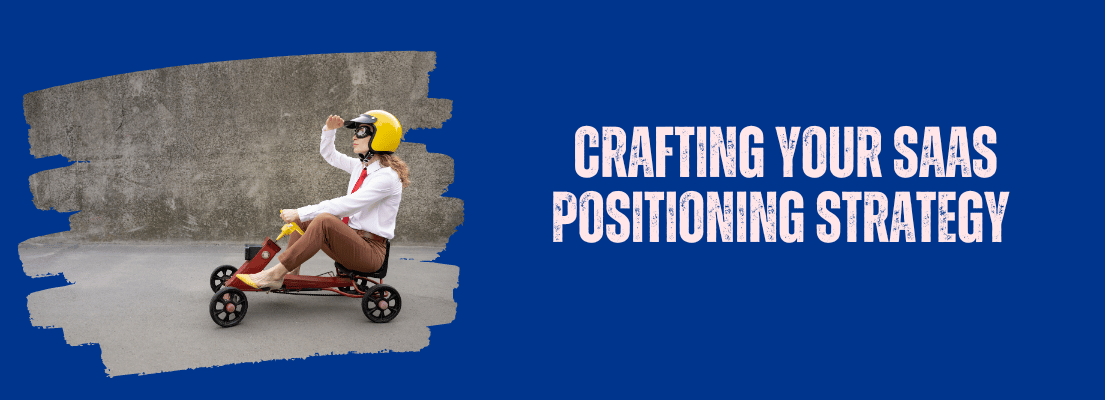What if we told you that in just a few months, you could turn your idea into a fully functioning, revenue-generating SaaS product?
And what if you could do it without breaking the bank or needing a team of engineers? Intrigued?
Keep reading to discover the blueprint that has empowered countless entrepreneurs to transform their visions into thriving SaaS businesses.
Short Summary
- Understand the advantages of SaaS to revolutionize your software industry and maximize profits.
- Identify a niche, target audience & problem worth solving to create a successful product that resonates with customers.
- Utilize pre-launch strategies, customer retention techniques & user feedback for continual success!
Understanding the SaaS Business Model
In the dynamic SaaS landscape, standing out from competitors and attracting ideal customers is a must for businesses. A well-crafted positioning strategy can reduce customer acquisition cost and communicate your product’s unique value, paving the way for growth and success. Think of it as the attire you choose to wear at that party we mentioned earlier – a strong SaaS positioning strategy can make all the difference in capturing the attention of your target audience.
Nonetheless, numerous SaaS businesses find positioning challenging due to its complexity. We’ll examine the significance of SaaS positioning and uncover the critical components and strategies that can fortify your business’s market position, helping you tackle these challenges.

The role of positioning in the SaaS industry
Positioning plays a vital role in the SaaS industry, as it enables businesses to create a robust position and differentiate themselves from rivals, ultimately boosting marketing effectiveness. However, positioning can be a difficult concept to grasp, and many SaaS businesses may be hesitant to invest the necessary effort to improve it.
Businesses can overcome these hurdles by carefully studying their competitors, knowing what they offer, and understanding the importance of their product to customers.
Metrics and customer feedback can provide valuable insights, helping businesses assess how their positioning strategy aligns with customer needs and allowing them to make data-driven decisions to refine their approach over time.
Challenges faced by SaaS businesses in positioning
Creating a unique, effective positioning strategy can seem intimidating to SaaS companies due to difficulties in comprehending their target audience, evaluating competitive alternatives, and developing a unique value proposition. Moreover, failing to properly assess customer needs and their unmet requirements can lead to incorrect product positioning, resulting in wasted resources on features that are not necessary or utilized.
Businesses can tackle these challenges by adopting diverse positioning strategies, such as targeting an existing market, targeting a subsegment of the existing market, or creating and targeting a new market. A SaaS business can develop a well-defined positioning strategy that addresses their customers’ pain points and sets them apart from competitors in the SaaS business landscape by understanding their target audience and competition.
Key Components of an Effective SaaS Positioning Strategy
Developing a triumphant SaaS positioning strategy demands profound comprehension of the key elements in play. These include:
- Identifying target customers
- Evaluating competitive alternatives
- Creating a unique value proposition
- Defining your market category
It all starts with comprehensive customer research to gain insights into your target audience’s needs and preferences.
With a firm grasp of your customers, your focus can shift towards creating a distinctive offering that sets your product apart from competitors and resonates with your target audience.

You can better articulate your product’s unique value and create a compelling positioning statement that effectively communicates this value to potential customers by comprehending the value offerings of your SaaS product and your target market.
We’ll delve deeper into each of these essential elements in the subsequent sections, assisting you in developing a successful SaaS positioning strategy.
Identifying target customers
Identifying and comprehending your target customers is a critical facet of triumphant SaaS positioning. You can create a positioning strategy that resonates with your ideal customers and drives growth by tailoring your product to appeal to a specific demographic or customer group.
To gather data on your target audience, you can conduct surveys using tools like Google Forms, Typeform, and SurveyMonkey, or schedule interviews with existing customers. This information will help you refine your positioning strategy and ensure that it aligns with your customers’ needs, preferences, and pain points, ultimately leading to higher customer satisfaction and loyalty.
Evaluating competitive alternatives
Evaluating your competitors and their propositions is vital in carving out a competitive advantage in the market. You can highlight your product’s unique value proposition and differentiate it from others, ultimately positioning it as the better choice for your target audience by understanding your competitors’ strengths and weaknesses.
For example, Coda, a document collaboration tool, successfully employs a competitor-based product positioning strategy by focusing on their unique strengths and differentiators in the market. You can create a positioning strategy that sets your SaaS product apart, making it more appealing to potential customers by analyzing and learning from the competition.
Crafting a unique value proposition
Creating an exclusive value proposition is key to differentiating your SaaS product from competitors and connecting with your target audience. Your value proposition should:
- Clearly communicate the benefits your product offers
- Address your customers’ pain points
- Showcase the features that differentiate it from other alternatives in the market.
One tool that can help you craft an effective value proposition is the Value Proposition Canvas, which bridges customer needs with product features to create a distinctive value proposition. You can create a compelling value proposition that drives customer loyalty and growth by focusing on your product’s unique benefits and ensuring that it addresses your customers’ problems.
Defining your market category
Defining a distinct market category is paramount to build a succinct and targeted positioning strategy. Your market category refers to the broader context in which your SaaS product operates, and it helps potential customers understand where your product fits in the market landscape.
You can better position your product in the minds of potential customers, making it easier for them to understand and appreciate its unique value by defining your market category. This clarity will not only help your product stand out from the competition but also ensure that your target audience can easily grasp its purpose and benefits.
Strategies for Creating a Strong SaaS Positioning Statement

An impactful product positioning statement is pivotal in efficiently conveying your SaaS product’s unique worth to prospective customers. It serves as a guide for decisions regarding product, sales, and marketing, ultimately facilitating a smoother journey to your next MRR or ARR goal.
This section will highlight the key elements of a successful SaaS positioning statement and illustrate with examples of real-life SaaS positioning statements that have contributed to companies’ market prominence.
Elements of a powerful positioning statement
An engaging positioning statement should adeptly communicate your SaaS product’s unique worth by detailing its functionality, intended users, and its distinguishing factors from competitors. Some key components of a strong positioning statement include:
- Identifying the target audience
- Defining the category of business
- Highlighting the point of difference
- Providing a reason to believe in your promise.
Incorporating these essential elements into your positioning statement will allow you to create a persuasive message that resonates with your target audience and sets your product apart from competitors. This will not only help attract potential customers but also foster customer loyalty and drive business growth.
Examples of successful SaaS positioning statements
Several SaaS companies have successfully crafted positioning statements that have helped them stand out in the market and attract their target audience. For example, Xero, a cloud-based accounting software, uses the positioning statement “We make it easy for businesses to manage their finances.” This simple yet effective message instantly communicates the main benefit of the product and appeals to small business owners who are looking for an easy-to-use financial management solution.
Another example is Tableau, a data visualization software company, with the positioning statement “We help companies make better decisions.” This statement succinctly conveys the primary benefit of using their software – empowering businesses to make informed decisions based on data. These examples demonstrate the power of a well-crafted positioning statement in effectively communicating your SaaS product’s unique value and attracting your target audience.
Leveraging Customer Feedback and Data for SaaS Positioning

Customer feedback and data are instrumental in shaping and fine-tuning your SaaS positioning strategy. You can gain valuable insights into your target audience’s needs, preferences, and pain points, allowing you to tailor your positioning strategy accordingly by gathering customer feedback and conducting data analysis.
This section will underscore the significance of gathering and scrutinizing customer feedback and data, demonstrating how these insights can be harnessed for enlightened decision-making regarding your SaaS product’s positioning strategy.
Collecting and analyzing customer feedback
Collecting and scrutinizing customer feedback is crucial to comprehend your customers’ needs and preferences better. This can be done through surveys, customer interviews, and analyzing customer interactions with your product.
Gathering feedback from a diverse range of customers will allow you to:
- Gain a comprehensive understanding of their needs and preferences
- Create a positioning strategy that resonates with your target audience
- Address their pain points
This process not only helps you refine your product offering but also ensures that your positioning strategy remains relevant and effective in the ever-evolving SaaS market.
Utilizing data to inform positioning decisions
Insights derived from data are fundamental in making enlightened decisions concerning your SaaS product’s positioning strategy. Analyzing metrics such as usage statistics, customer support requests, and reviews will make you gain valuable insights into customer preferences, market trends, and competitive landscapes.
Leveraging data to inform your positioning decisions can help you identify opportunities, optimize your messaging, and differentiate your product from competitors. Ultimately, data-driven positioning decisions lead to improved competitive advantage, increased customer satisfaction, and better business outcomes.
Related Article: The Ultimate Guide to B2B SaaS Metrics for Founders: Boost Your Business Performance (Updated for 2023)
Implementing and Adapting Your SaaS Positioning Strategy
After developing your SaaS positioning strategy, it’s vital to deploy it throughout your organization and synchronize it with your marketing and sales initiatives. This ensures a consistent customer experience, tailored and relevant communications, and a focus on meeting customer needs.
Nevertheless, maintaining relevance and competitiveness in the dynamic SaaS market necessitates continuous monitoring and tweaking of your positioning strategy.
In this section, we will discuss the importance of implementing and adapting your SaaS positioning strategy and provide practical tips for ensuring its success.
Aligning marketing and sales efforts
Synchronizing your marketing and sales initiatives with your positioning strategy is pivotal in crafting a coherent and impactful message that connects with your target audience
Ensuring consistent messaging between the marketing and sales teams fosters collaboration, enhancing the customer experience and promoting business growth.
Some strategies for aligning your marketing efforts with your positioning strategy include adopting a unified message, leveraging customer feedback and data to inform decisions, and maintaining a consistent approach across all channels.
You can foster better collaboration between your marketing and sales teams, ultimately leading to increased revenue and customer satisfaction by doing so.
Monitoring and adjusting your positioning strategy
With the constant evolution of the SaaS market, frequent assessment and refinement of your product’s positioning is necessary to maintain its relevance to your ideal customers. To do this, you can track customer feedback, analyze competitor positioning, and monitor changes in the market landscape.
Continuous adjustments and monitoring of your positioning strategy allow you to remain competitive, cater more effectively to your customer’s needs, and uphold a dominant market stance. Such flexibility not only aids in attracting and keeping customers but also guarantees the enduring success of your SaaS product.
Summary
In conclusion, crafting a successful SaaS positioning strategy is akin to making a lasting impression at a crowded party – you need to showcase your product’s unique value and appeal to your target audience.
Grasping the significance of SaaS positioning, excelling in its core elements, utilizing customer feedback and data, and refining your strategy allows you to set your product apart in a competitive landscape and foster expansion.
Remember, just like the perfect party outfit, a well-crafted SaaS positioning strategy can make all the difference in capturing the attention of your target customers.
If you enjoyed this article, then you’ll love The Secret Formula for SaaS Success: Unpacking the Rule of 40. Read it to discover why some SaaS companies, despite having lower growth rates, attract more investors and achieve higher valuations than their faster-growing counterparts.
Frequently Asked Questions
What is SaaS positioning?
SaaS positioning is the process of understanding competitive alternatives, unique offerings, target audience persona, value offerings, and market category in order to effectively communicate your product’s value proposition.
What does SaaS mean in marketing?
Software-as-a-Service (SaaS) marketing is the method used to build brand awareness, position a product, and help to sell software via the internet on a subscription basis. SaaS marketing teams are an essential part of product-led business growth, driving successful product launches and customer acquisition.
What is the SaaS platform strategy?
A SaaS product strategy outlines the problem your tool solves, explains its difference from competitors, and guides product decisions for marketing and sales teams by pointing out valuable proposition and target users.
What is SaaS branding?
SaaS branding is an image of a company and its services with an identifiable stamp, designed to position and sell subscription-based products to new customers and compel them to choose it from the competition.
What does positioning mean in marketing?
Positioning in marketing is the process of strategically positioning a brand or product in a target market, in order to influence consumer perception relative to competitors. It involves how you market the brand or product to establish an image or identity and create a desired position in the minds of consumers.





